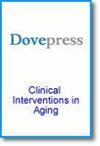TYG 指数作为晚期慢性心力衰竭合并肾功能障碍患者临床结局的新预测指标
IF 3.7
3区 医学
引用次数: 0
摘要
背景:甘油三酯-葡萄糖(TYG)指数是反映胰岛素抵抗的一种新型可靠指标。它对心血管疾病发病和预后的预测能力已得到证实。然而,对于晚期慢性心力衰竭(acHF)患者来说,由于通常伴有肾功能障碍(RD),TYG 的预后价值受到了挑战。因此,本研究以伴有肾功能不全的急性心力衰竭患者为研究对象,探讨 TYG 指数对其预后的预测价值:共纳入 717 例伴有 RD 的 acHF 患者。acHF诊断基于2021年ESCacHF标准。RD定义为eGFR < 90 mL/(min/1.73 m2)。根据 TYG 指数值将患者分为两组。主要终点为主要心血管不良事件(MACE),次要终点为全因死亡率(ACM)。随访时间为 21.58 (17.98- 25.39) 个月。采用 ROC 曲线确定了预测 MACE 和 ACM 的最佳临界值。通过单变量和多变量 COX 回归分析揭示了 MACE 和 ACM 的危险因素。根据单变量 COX 回归分析,高 TyG 指数被确定为 MACE(危险比 = 5.198;95% 置信区间 [CI],3.702- 7.298;P <;0.001)和 ACM(危险比 = 4.461;95% 置信区间 [CI],2.962- 6.718;P <;0.001)的危险因素。多变量 COX 回归分析显示,高 TyG 组患者的 MACE 风险增加了 440.2%(95% CI,3.771- 7.739;P <;0.001),ACM 风险增加了 406.2%(95% CI,3.268- 7.839;P <;0.001)。Kaplan-Meier生存分析显示,TyG指数水平高的患者在30个月内发生MACE和ACM的风险较高:本研究发现,TYG指数高的患者发生MACE和ACM的风险增加,TYG指数可作为预后的独立预测指标。本文章由计算机程序翻译,如有差异,请以英文原文为准。
TYG Index as a Novel Predictor of Clinical Outcomes in Advanced Chronic Heart Failure with Renal Dysfunction Patients
Background: The triglyceride-glucose (TYG) index is a novel and reliable marker reflecting insulin resistance. Its predictive ability for cardiovascular disease onset and prognosis has been confirmed. However, for advanced chronic heart failure (acHF) patients, the prognostic value of TYG is challenged due to the often accompanying renal dysfunction (RD). Therefore, this study focuses on patients with aHF accompanied by RD to investigate the predictive value of the TYG index for their prognosis.
Methods and Results: 717 acHF with RD patients were included. The acHF diagnosis was based on the 2021 ESC criteria for acHF. RD was defined as the eGFR < 90 mL/(min/1.73 m2). Patients were divided into two groups based on their TYG index values. The primary endpoint was major adverse cardiovascular events (MACEs), and the secondary endpoints is all-cause mortality (ACM). The follow-up duration was 21.58 (17.98– 25.39) months. The optimal cutoff values for predicting MACEs and ACM were determined using ROC curves. Hazard factors for MACEs and ACM were revealed through univariate and multivariate COX regression analyses. According to the univariate COX regression analysis, high TyG index was identified as a risk factor for MACEs (hazard ratio = 5.198; 95% confidence interval [CI], 3.702– 7.298; P < 0.001) and ACM (hazard ratio = 4.461; 95% CI, 2.962– 6.718; P < 0.001). The multivariate COX regression analysis showed that patients in the high TyG group experienced 440.2% MACEs risk increase (95% CI, 3.771– 7.739; P < 0.001) and 406.2% ACM risk increase (95% CI, 3.268– 7.839; P < 0.001). Kaplan-Meier survival analysis revealed that patients with high TyG index levels had an elevated risk of experiencing MACEs and ACM within 30 months.
Conclusion: This study found that patients with high TYG index had an increased risk of MACEs and ACM, and the TYG index can serve as an independent predictor for prognosis.
Methods and Results: 717 acHF with RD patients were included. The acHF diagnosis was based on the 2021 ESC criteria for acHF. RD was defined as the eGFR < 90 mL/(min/1.73 m2). Patients were divided into two groups based on their TYG index values. The primary endpoint was major adverse cardiovascular events (MACEs), and the secondary endpoints is all-cause mortality (ACM). The follow-up duration was 21.58 (17.98– 25.39) months. The optimal cutoff values for predicting MACEs and ACM were determined using ROC curves. Hazard factors for MACEs and ACM were revealed through univariate and multivariate COX regression analyses. According to the univariate COX regression analysis, high TyG index was identified as a risk factor for MACEs (hazard ratio = 5.198; 95% confidence interval [CI], 3.702– 7.298; P < 0.001) and ACM (hazard ratio = 4.461; 95% CI, 2.962– 6.718; P < 0.001). The multivariate COX regression analysis showed that patients in the high TyG group experienced 440.2% MACEs risk increase (95% CI, 3.771– 7.739; P < 0.001) and 406.2% ACM risk increase (95% CI, 3.268– 7.839; P < 0.001). Kaplan-Meier survival analysis revealed that patients with high TyG index levels had an elevated risk of experiencing MACEs and ACM within 30 months.
Conclusion: This study found that patients with high TYG index had an increased risk of MACEs and ACM, and the TYG index can serve as an independent predictor for prognosis.
求助全文
通过发布文献求助,成功后即可免费获取论文全文。
去求助
来源期刊

Clinical Interventions in Aging
GERIATRICS & GERONTOLOGY-
CiteScore
6.20
自引率
2.80%
发文量
193
期刊介绍:
Clinical Interventions in Aging, is an online, peer reviewed, open access journal focusing on concise rapid reporting of original research and reviews in aging. Special attention will be given to papers reporting on actual or potential clinical applications leading to improved prevention or treatment of disease or a greater understanding of pathological processes that result from maladaptive changes in the body associated with aging. This journal is directed at a wide array of scientists, engineers, pharmacists, pharmacologists and clinical specialists wishing to maintain an up to date knowledge of this exciting and emerging field.
 求助内容:
求助内容: 应助结果提醒方式:
应助结果提醒方式:


